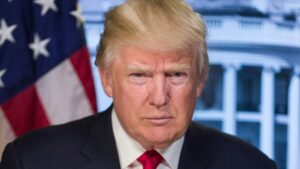One week after announcing a 32% tariff on Indonesia, President Donald Trump revealed a new agreement with the Southeast Asian nation, setting a 19% tariff on goods exported from Jakarta.
Taking to Truth Social, Trump stated, “This morning I finalized an important deal with the Republic of Indonesia after speaking with their highly respected President Prabowo Subianto. This landmark deal opens up Indonesia’s ENTIRE MARKET to the United States for the first time in history.”
Key Details of the US-Indonesia Trade Deal
As part of the agreement, Indonesia has committed to purchasing $15 billion in US energy and $4.5 billion in American agricultural products. Trump noted that Indonesia would also buy 50 Boeing jets, many of which will be the 777 model. “For the first time ever, our ranchers, farmers, and fishermen will have complete and total access to the Indonesian market of over 280 million people,” he added.
Since the US and Indonesia reached this trade deal ahead of the August 1 deadline, Indonesia will now pay a 19% tariff on goods exported to the United States. Trump mentioned, “Indonesia will pay the United States a 19% tariff on all goods they export to us, while U.S. exports to Indonesia are to be tariff- and non-tariff barrier-free.”
Strengthening Economic Relations
In expressing gratitude, Trump thanked the Indonesian people for their “friendship and commitment” in balancing trade deficits. “We will keep DELIVERING for the American people and the people of Indonesia,” he stated.
While Indonesia is not among the top 15 trading partners of the US, its total trade deal is projected to reach just under $40 billion in 2024. This relationship is showing promising growth, with US exports to Indonesia increasing by 3.7% and imports rising by 4.8% last year.
Future Implications and Other Agreements
Susiwijono Moegiarso, a senior official with Indonesia’s Coordinating Ministry for Economic Affairs, indicated that they are “preparing a joint statement between the US and Indonesia that will explain the size of reciprocal tariffs, including the tariff deal, non-tariff, and commercial arrangements.”
As the situation unfolds, the new agreement with Indonesia highlights the evolving landscape of international trade under the current administration.



